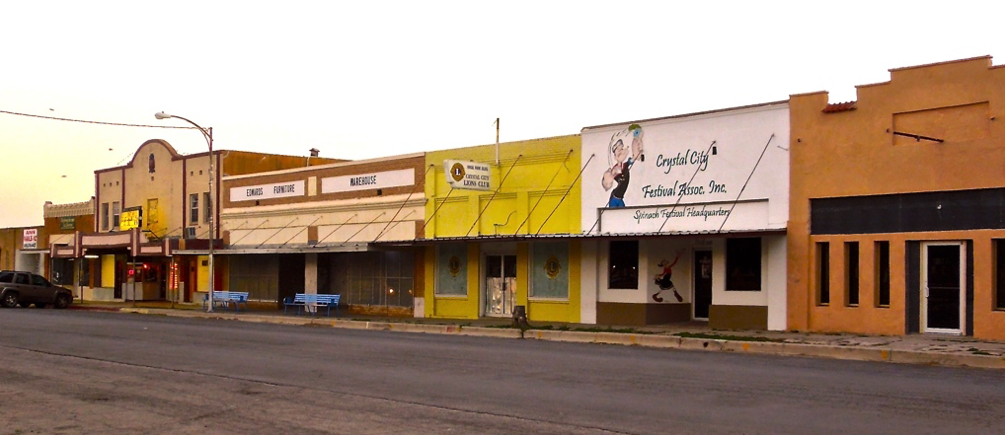Located thirty miles from the U.S.-Mexico border, Crystal City, Texas, lies at the heart of South Texas’ “Winter Garden” region. Founded as a migrant farmworker community in the early twentieth century, Crystal City, or Cristál in Spanish, is known as the “Spinach Capital of the World” as well as a critical nexus point on the migrant farm worker trail in the United States. And, in 1969, was the site of one of the largest Chicanx student walkouts in the U.S. Southwest that served as a rallying cry for the Chicanx Civil Rights Movement, or El Movimiento in Spanish. While Crystal City’s youth walked out in protest of institutional and educational discrimination (i.e. tracking, racial quotas, zero bola, etc) in their high schools, their protest reflected larger regional political tensions between Anglos and ethnic Mexicans in Greater South Texas. For in areas like Crystal City, though ethnic Mexicans comprised over ninety percent of the population, they held little to no political power that was reserved for the town’s Anglo elite. After weeks of protest, Crystal City became a national symbol of non-violent direct action that drew local, regional, and national attention to systemic racism and united minority communities in their respective fights for social justice. Following the walkouts, local Chicanx community activists from Crystal City and San Antonio, Texas, formed the Partido Nacional de La Raza Unida, or La Raza Unida Party (LRUP), a political party bound by Chicano nationalism, in January 1970. From 1970 until the party dissolved in 1978, La Raza Unida Party ran Mexican American candidates in local South Texas elections and formed chapters in California, Colorado, Arizona, and New Mexico. In the decades following the walkouts and La Raza Unida Party, Crystal City remains a community intrinsically tied to the forging of a Chicanismo, or the essence of being Chicano as both an ideology and an identity. Yet as the legacy of El Movimiento looms large over Cristál, community members continued to grapple with the meanings, successes, and traumas associated with social and political activism. “Here We Remain” explores the intersections of ethnic identity, collective memory, and political legacy several decades after the dissolution of the La Raza Unida Party within Cristál’s community.
CLICK HERE to view the full collection in the archives of Baylor University’s Institute for Oral History.
CLICK HERE to view an earlier collection of Crystal City interviews collected in the 1970s with LRUP leaders also available in the Institute for Oral History’s archives.
** Collection Notes: The Institute for Oral History at Baylor University, where these collections are housed, is in the process of preserving these interviews. Some interviews are pending final review and have not yet been made available. Thank you to the Institute for Oral History for their hard work and dedication to digital preservation. Please CLICK HERE to visit their website for more information.



** Interview still in process at Baylor University’s Institute for Oral History
CLICK HERE to view a 1996 interview with Severita Lara in “Tejano Voices” Oral History Archive housed at the Center for Mexican American Studies at the University of Texas at Arlington.

To Listen to the interview and/or Read the Full Transcript with Diana Palacios Gámez CLICK HERE

** Interview still in process at Baylor University’s Institute for Oral History


** Interview still in process at Baylor University’s Institute for Oral History

To Listen to the Full Interview and/or Read the Full Transcript with Diana Palacios Gámez, CLICK HERE

** Interview still in process at Baylor University’s Institute for Oral History

** Interview still in process at Baylor University’s Institute for Oral History

** Interview still in process at Baylor University’s Institute for Oral History

** Interview still in process at Baylor University’s Institute for Oral History

